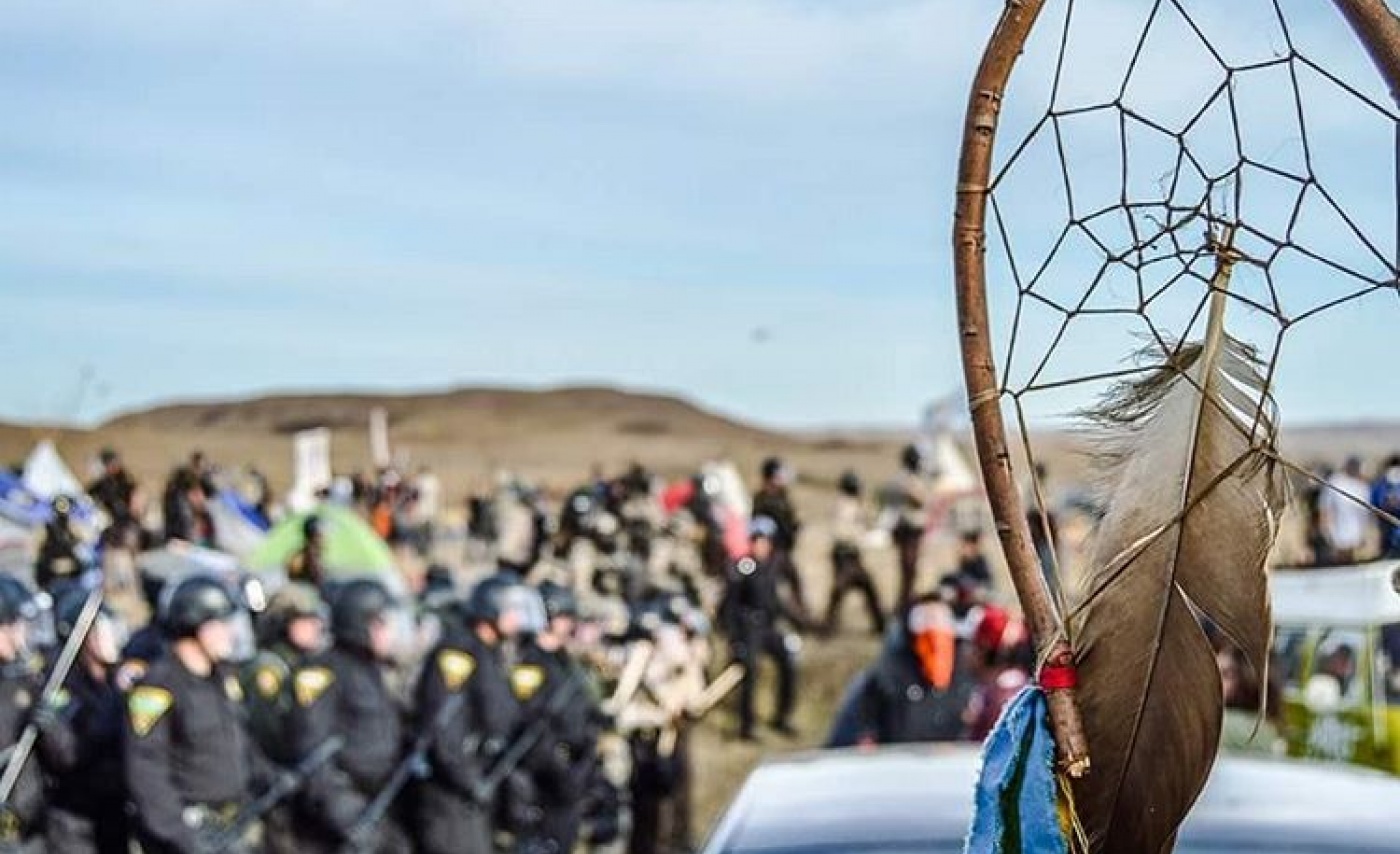
by Deep Green Resistance News Service | Nov 14, 2016 | Lobbying
by Cultural Survival
“We call upon all member states, to condemn the destruction of our sacred places and to support our nation’s efforts to ensure that our sovereign rights are respected. We ask that you call upon all parties to stop the construction of the Dakota Access pipeline and to protect the environment, our nation’s future, our culture and our way of life.”
– Standing Rock Sioux Tribe Chairman Dave Archambault II
The International Indigenous Peoples`Forum on Climate Change (IIPFCC) condemns the construction of the Dakota Access pipeline and stands in solidarity with our sisters and brothers of the Standing Rock Sioux Tribe and all Water Protectors in opposition to this project.
Human Rights and the Indigenous Rights Perspective
The Dakota Access pipeline is being built on the un-ceded treaty lands of the Standing Rock Sioux Tribe, without their free, prior and informed consent, as is described in the UN Declaration on the Rights of Indigenous Peoples in Articles 18, 19, and 32. The pipeline is also being constructed through sacred areas and ancestral burial grounds of the Standing Rock Sioux and other Indigenous Peoples of the area. This massive construction project does not respect the Standing Rock Sioux’s Treaty rights, sovereignty, or their right to self-determination. It is an outright violation of their rights over their lands and resources as Indigenous Peoples, and does not respect the human rights of Indigenous Peoples.
Climate Perspective
The Dakota Access pipeline will transport 470 000 – 570 000 barrels of oil every day, which will release emissions of 101,4 million tonnes CO2, as much as 30 American coal power plants, every year. This is not consistent with the State Parties’ obligations and commitments under the Paris Agreement or the Sustainable Development Goals (SDGs). The continued production of fossil fuels only assures that global temperature will rise well above 2°C in the immediate future and threaten the lives and livelihoods of Indigenous Peoples around the world. The potential for a major oil spill from the Dakota Access pipeline is immediate. The pipeline is scheduled to cross underneath the Missouri River, which is the main source for drinking water for the Standing Rock Sioux Reservation and for millions of people who live downstream. Sunoco Logistics, the operating company of the pipeline, alone has experienced over 200 oil spills in 6 years, and the US had in total over 3300 leaks since 2010, polluting rivers, ground waters, land and air, and both human lives, health and livelihoods has been lost.
The IIPFCC calls upon the US to halt the construction of the Dakota Access pipeline and to enter into serious consultations with the Standing Rock Sioux, and other tribes affected by this project, respecting the right of the Tribes to free, prior and informed consent.
The state owned Norwegian Oil Fund is heavily invested in the pipeline. The IIPFCC calls upon Norway to divest from the Dakota Access pipeline Project.
We also call on all States to ensure the protection of Indigenous Peoples´ territories across the world as a critical action in the implementation of the Paris Agreement and in achieving the SDGs.
Featured image by A. Golden/Flickr.
by Deep Green Resistance News Service | Jun 18, 2016 | Colonialism & Conquest
By Laura Hobson Herlihy / Cultural Survival
The Miskitu people (pop. 185,000) live in Muskitia, a rainforest region that stretches along the Central American Caribbean coast from Black River, Honduras to just south of Bluefields, Nicaragua. Two-thirds of Muskitia and the Miskitu people reside in Nicaragua. The Miskitu people in Nicaragua today are in a crisis situation. Armed mestizo colonists are attacking their communities, pillaging and confiscating their rainforest lands. This article is a cry for help.
The Miskitu people have legal ownership of their lands guaranteed by Nicaraguan Law 445, the ILO Convention 169, and the UN Declaration on the Rights of Indigenous People. Yet, mestizo colonists (called, colonos) from the interior and Pacific coast have invaded, and now illegally occupy, nearly half of their lands. In September 2015, violence over land conflicts erupted in the Miskitu territories of Wangki Twi-Tasba Raya and Li Aubra. These territories are located near the Coco or Wangki River, the international border between Nicaragua and Honduras.
Since September, mestizo colonists with automatic weapons have killed, injured, and kidnapped more than 80 Miskitu men with impunity. In fear for their lives, between 1-2,000 Miskitu refugees have fled to Waspam and Puerto Cabezas-Bilwi and Honduran border communities. The refugees–mainly women, children, and elders–are suffering from starvation and lack medical supplies. Children have not attended school for six months. Meanwhile, periodic attacks continue on Miskitu communities in Wangki Twi-Tasba Raya.
Much of the violence now occurring revolves around article 59 of the Communal Property Law (law 445). Article 59 requires the Nicaraguan state to complete saneamiento, the cleansing or the removal of colonists and industries from Indigenous and Afro-descendant territories. The current Nicaraguan government publically agreed to saneamiento but has not responded. Similarly, the government still has not provided protection to the Miskitu communities under attack or assistance to the refugees. As a result of the government’s delayed reaction to the crisis, the Miskitu people now suspect the Sandinista (FSLN) state to be complicit with the colonists’ invasion of their Indigenous territories.
In a separate but related issue, the FSLN government passed the Canal Law (Act 840) that approved the Chinese-backed (HKND) inter-oceanic canal to cut through the ancestral homeland of the Indigenous and Afro-descendant peoples along the Nicaraguan Caribbean coast. Tensions are rising over Indigenous territoriality and land rights, especially between the Miskitu people and President Daniel Ortega’s Sandinista government. The tense situation over land rights today bares eerie similarities to the war-torn years of the 1980s in Nicaragua, when Ortega first served as President (1985-1990) and the Miskitu fought as counter-revolutionary warriors in the Contra war within the Sandinista revolution (1979-1990).
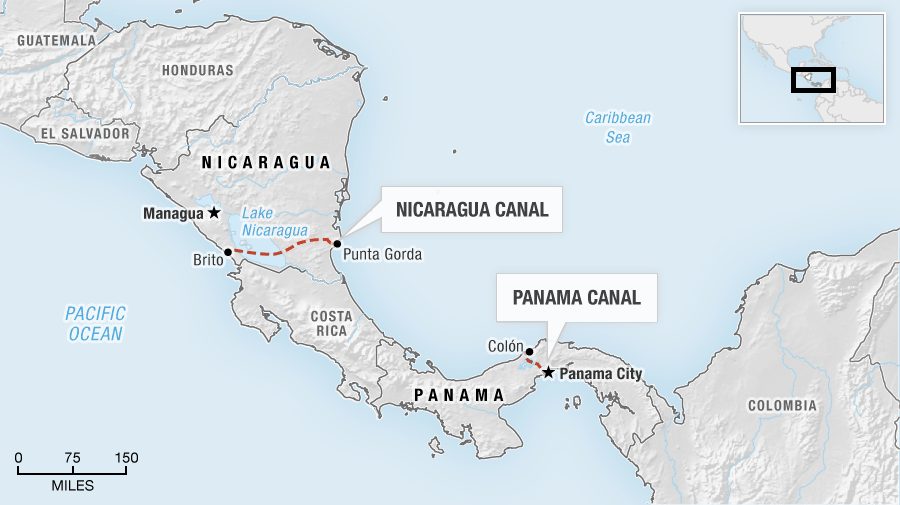
As a US anthropologist who has worked for over twenty years with the Honduran and Nicaraguan Miskitu people, I had the opportunity to attend the 2016 United Nations Permanent Forum on Indigenous Issues (May 9-20). On Thursday, May 12, I recorded Miskitu leader Brooklyn Rivera’s intervention in the session, “Dialogue with Indigenous Peoples.” Rivera has served as the Líder Máximo (literally, Highest Leader) of the Nicaraguan Miskitu people for over 30 years; after rising to power as a military leader in the revolution and war, Rivera in 1987 founded and became the long-term director of the Indigenous organization Yatama (Yapti Tasba Masraka Nanih Aslatakanka/Sons of Mother Earth). Special thanks to Costa Rican anthropologist Fernando Montero (ABD, Columbia) for transcribing Rivera’s United Nations intervention in Spanish and translating it to the English below.

English Version
My name is Brooklyn Rivera. I am both a son and the highest leader of the Miskitu people of the Nicaraguan Muskitia. As we know, the rights of Indigenous peoples are essentially human rights. According to Article 1 of the UN Declaration on the Rights of Indigenous Peoples, Indigenous people have the right, both as peoples and as individuals, to the full enjoyment of their human rights and fundamental liberties. In my country of Nicaragua, the rights of Indigenous people have suffered severe setbacks in the last several years. Indeed, the current Sandinista government–contrary to its rhetoric in international forums and in flagrant violation of the rights of Indigenous peoples–freely acts against Indigenous peoples, advancing a consistent policy of aggression and internal colonialism.
Consider the following within the specific sphere of Indigenous peoples’ rights: the government imposes violence against our communities by means of settlers who invade ancestral territories, carrying out armed attacks, murders, kidnappings, rape, and displacement, producing refugees, most of whom are women, children, and people of old age. All this occurs in the face of governmental and institutional passivity, even complicity. Moreover, the Nicaraguan government is currently implementing a policy of militarization in our communities and fishing territories, committing murders such as that of our brother and leader Mario Lehman last September. In like manner, the government is overtly trampling on our communities’ right to ancestral autonomy by interfering with the election of their leaders according to their own practices and customs, devoting itself to destroying the structure and traditional procedures of our communities with the aim of replacing them with the so-called Sandinista Leadership Committees, part of their party structure. In this way they create and impose a spurious and noxious structure parallel to Indigenous authorities. You will understand that, by applying this policy, the government and the ruling party are fomenting division within families and communities, destroying their social fabric, cultural values and [imposing] heightened suffering and poverty. In addition, in open violation of the right to work, the Sandinista government denies jobs and government positions to Indigenous professionals and technicians, demanding that they become members of their party before considering them for these positions.
With regard to the sphere of the environment of our peoples in Nicaragua, I must first point out the dispossession of lands and territories suffered by Miskitu communities perpetrated by cattle ranchers, mining companies, and wealthy sectors linked to the government and the ruling party, who use settlers as spearheads. In this invasion, armed settlers arrive in our lands, advance the agricultural frontier, occupy extensions of territory, and destroy the habitats and ecosystems of Indigenous peoples, preying on their fauna, flora, and marine ecology. Needless to say, this extractivist policy involves the looting of ancestral communal resources such as forests, flora, mineral resources, water resources, and land itself with the illegal land sales in which settlers participate. I must also mention the promotion of megaprojects such as the interoceanic canal and the Tumarin hydroelectric dam in Awaltara, both of which violate Indigenous peoples’ right to prior, free, and informed consent. These megaprojects render entire communities vulnerable to disappearing along with their culture and language. This is the case of the Rama people, a small, vulnerable people in danger of extinction who reside in the Southern Moskitia. In the face of this crude reality and despite its demonstrated lack of political will and its disrespect for international laws and institutions—not to mention my own arbitrary, illegal expulsion from the National Parliament—once again we demand from the Nicaraguan government:
1. The immediate application of the recommendations issued last December by the UN Special Rapporteur on the Rights of Indigenous Peoples, in reference to the cleansing [“saneamiento”] of Indigenous territories and the protection of our communities in the face of settler invasion;
2. The immediate enactment of the precautionary measures suggested by the OAS’ Human Rights Commission on behalf of the Indigenous communities in the regions of Tasba Raya and Wangki Li Auhbra (location in the municipality of Waspam), approved in October 2015 and expanded in January 2016;
3. The immediate launch of a process of genuine dialogue and negotiation with Indigenous peoples via their organizations and leaders to reach real solutions based on respect for Indigenous peoples and the recognition of their dignity, as outlined in existing frameworks;
4. Finally, the immediate restitution of the undersigned as legislator, in accordance with his status as a popularly elected official put in power thanks to the votes of Indigenous peoples, whose constitutional and legal rights were violated with my arbitrary and illegal expulsion from Parliament.
I end my intervention by asking all participants, especially the Indigenous peoples in this forum, to engage in active solidarity with the Indigenous peoples of Nicaragua and their organizations as they resist and demand dignity, rights, and justice from the Sandinista government in Nicaragua.
Thank you, Mr. President.
En Espanol
Soy Brooklyn Rivera, hijo del pueblo mískitu de la Mosquitia nicaragüense y su dirigente principal. Como sabemos, los derechos de los pueblos indígenas son esencialmente derechos humanos. Como se establece en el artículo 1 de la Declaración de la ONU sobre los Pueblos Indígenas, los indígenas tienen derecho como pueblos o como individuos al disfrute pleno de todos sus derechos humanos y las libertades fundamentales. El país de donde vengo yo, Nicaragua, en los últimos años ha experimentado un grave retroceso en el ejercicio de los derechos de nuestros pueblos indígenas, recogido en el marco legal interno y externo del país. En efecto, el actual gobierno sandinista, contrario a su retórica en los foros internacionales y en abierta violación de los derechos de los pueblos indígenas reconocidos en la Constitución Política y en las demás leyes y los instrumentos internacionales suscritos, se dedica a actuar libremente en su contra impulsando toda una política de agresión y colonialismo interno.
Veamos: en el ámbito específico de los derechos humanos de nuestros pueblos indígenas, a través de los colonos invasores de los territorios ancestrales, impone una situación de violencia en contra de nuestras comunidades mediante ataques armados, cometiendo asesinatos, secuestros, violaciones y desplazamentos, produciendo refugiados, mayormente niños, mujeres y ancianos. Todo esto ocurre ante la pasividad y aun la complicidad del gobierno y sus instituciones. Más aún, el gobierno nicaragüense implementa una política de militarización de las comunidades y las áreas de pesca, en las que cometen asesinatos como en el caso del crimen del hermano dirigente Mario Lehman ocurrido en el mes de septiembre pasado. De la misma forma, el gobierno aplica un abierto atropello al derecho de autonomía ancestral de nuestras comunidades en la elección de sus autoridades basada en los usos y costumbres, cuando a través de sus turbas partidarias y con el acompañamiento de sus policías y hasta de militares, aún así sin el mínimo respeto a las leyes y formas organizativas propias, se empecina en destruir la estructura y los procedimientos tradicionales de nuestras comunidades con el fin de sustituirlos con los llamados Comités de Liderazgo Sandinista, una estructura de su partido en el poder, creando e imponiendo así una estructura espuria y nociva, paralela a las autoridades indígenas. Como comprenderán, aplicando esta política el gobierno y su partido crean división entre las familias y comunidades, destruyendo sus tejidos sociales, valores culturales y mayor sufrimiento y pobreza. Además, el gobierno sandinista en abierta discriminación al derecho al trabajo, niega a los profesionales y técnicos de los pueblos indígenas el derecho al trabajo cuando exige que debe convertir a ser miembro de su partido para ocupar cargos o empleo en el país.
En relación al ámbito del medio ambiente de nuestros pueblos en Nicaragua, debo iniciar señalando el despojo de las tierras y territorios que sufren las comunidades en la Mosquitia de parte de los terratenientes ganaderos, empresas mineras y grupos adinerados vinculados al gobierno y a su partido, utilizando a los colonos como punta de lanza. En la invasión, los colonos armados llegan a nuestras tierras, aplican un avance agropecuario, ocupan extensiones de territorio y destruyen los hábitats y los ecosistemas de los pueblos indígenas, cometiendo depredaciones ambientales en su fauna, flora y entorno marino. Lógicamente, con esta política extractivista pasa por el saqueo de los bienes comunales ancestrales tales como los bosques, la flora, los recursos mineros, los recursos hídricos y la misma tierra con el tráfico ilegal de parte de los colonos. También aquí debo mencionar el impulso de los megaproyectos tales como el canal interocéanico y el hidroeléctrico Tumarín en Awaltara, en ambos casos violentando el derecho al consentimiento previo, libre e informado de los pueblos, impulsan sus megaproyectos en los que exponen la desaparición de comunidades enteras junto con su cultura y su idioma. Tal es el caso del pueblo Rama, pueblo pequeño, vulnerable y en proceso de extinción, ubicado en la Mosquitia Sur. Ante esta cruda realidad y a pesar de su falta de voluntad política demostrada y de su irrespeto a las leyes y las instituciones internacionales, así como de mi expulsión arbitrario e ilegal del Parlamento Nacional, como un esfuerzo de solución al conflicto impuesto, una vez más exigimos al gobierno nicaragüense:
- La inmediata aplicación de las recomendaciones de la Relatora Especial de las Naciones Unidas sobre los Derechos de los Pueblos Indígenas, emitidas en el mes de diciembre pasado, referentes al cumplimiento de la etapa de saneamiento de los territorios y de la protección de nuestras comunidades ante la invasión de los colonos;
- El inmediato cumplimiento de las medidas cautelares presentadas de parte de la Comisión de Derechos Humanos de la OEA a favor de las comunidades indígenas de la zona de Tasba Raya y de Wangki Li Auhbra en el municipio de Waspam, y abrobadas en el mes de octubre 2015 y ampliadas en enero de 2016;
- La inmediata apertura de un proceso genuino de diálogo y negociaciones con los pueblos indígenas a través de sus organizaciones y líderes que conduzcan a unas soluciones reales basadas en el respeto y el reconocimiento de la dignidad y los derechos de nuestros pueblos reconocidos en las normativas;
- Finalmente, la restitución inmediata del suscrito como legislador electo popularmente con los votos de sus pueblos indígenas, violentando mis derechos constitucionales y legales con el despojo arbitrario e ilegal cometido durante mi expulsión del Parlamento.
Termino mi intervención requiriendo a todas y todos los participantes, mayormente a los pueblos indígenas de este foro, una solidaridad activa con los pueblos indígenas y sus organizaciones en Nicaragua en el marco de su resistencia y demanda de dignidad, derecho y justicia ante el gobierno sandinista en Nicaragua.
Gracias, Presidente.
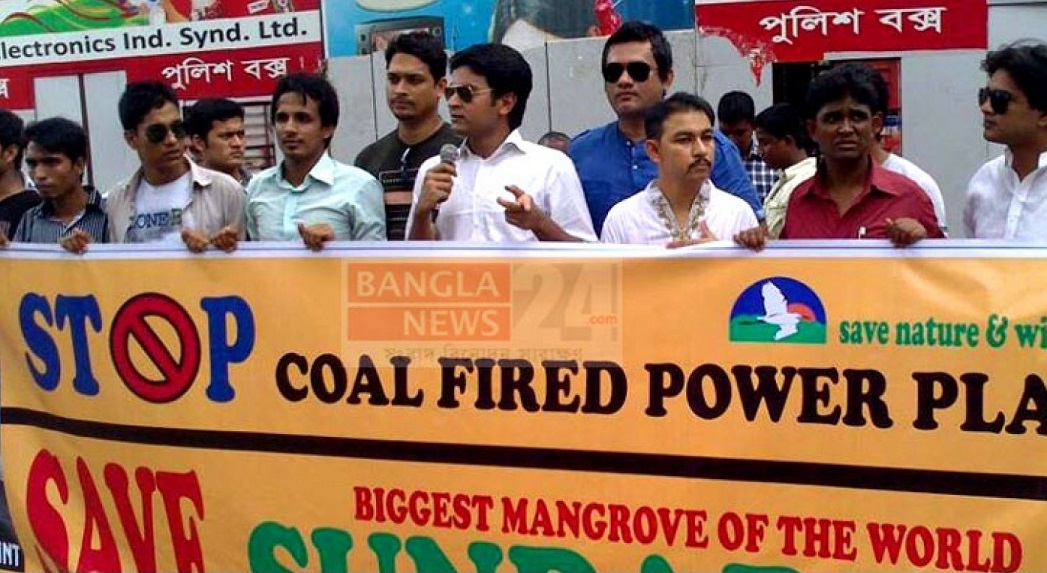
by Deep Green Resistance News Service | Apr 23, 2016 | Mining & Drilling, Repression at Home
By Cultural Survival
At least four people were killed after police opened fire at a massive protest of several thousand villagers in Bangladesh Monday, April 4th, reported the Phulbari Solidarity Group.
“This is a terrible tragedy and major news. It is the largest loss of life at an anti-coal protest in Bangladesh since the tragic deaths in the August 26, 2006 killings at Phulbari, Bangladesh, where three people were killed and 200 injured by paramilitaries. It is the worst overall loss of life in anti-coal protests worldwide since the killings of six people in Jharkhand, India, at two protests in April 2011,” noted Ted Nace, the editor of Coal Swarm.
Professor Anu Muhammd, the Member Secretary of the National Committee to Protect Oil, Gas, Mineral Resources, Power and Port in Bangladesh, noted: “The villagers in Bashkhali have been loud against the destructive plans of S. Alam Group for months because the company wants to build two coal-fired power plants in the area by evicting thousands of villagers and landowners. The coal-businessmen of S. Alam Group, financed by two Chinese firms — SEPCOIII Electric Power and HTG, were fully aware of the strong opposition to the coal-power plant.”
According to the Daily Star, in December 2013, S Alam Group, struck an agreement with SEPCO3 Electric Power Construction Corporation of China to set up a coal-fired power plant in Banshkhali district of Chittagong, Bangladesh. On February 16 this year, the government signed power purchase agreements with two private joint ventures led by S Alam Group to buy electricity at Tk 6.61 per kilowatt-hour from two projects with power generation capacity of 1,224MW. S Alam Group and their Chinese backers plan to initiate the power plant by November 2019 across a 600-acre site. No consultation has taken place with communities members who would be affected. The project will require an investment of $2.4 billion of which $1.75 billion will come from Chinese lenders.
Abu Ahmed was a witness to the police violence, himself being shot in his leg. He said that the villagers had been holding peaceful protests for days after S. Alam, the local conglomerate behind the project, started purchasing land for the plants in the village, which lies on the edge of the Bay of Bengal. But the government did not pay attention to the village protests and the district administration remained silent for months. This led the villagers to stage a mass protest which turned into the worst tragedy in the history of coal in Bangladesh. The government of Bangaldesh announced on April 9 that work at the $2.4 billion power plant would be suspended for 15 days, while it carries out an assessment of the plant’s environmental impact, led by Bangladeshi and foreign scientists.
The plans for coal mine join a laundry list of other planned coal projects being pursued by the government of Bangladesh and foreign investors, despite huge opposition from communities, international coalitions, human rights experts, and environmentalists. Phulbari coal project, in Northeastern Bangladesh, is one infamous case that has lead to massive protests over the 8 years since it was first proposed by GCM resources, a British-based company. Ongoing mobilizations by communities on the ground have been successful in preventing the licensing of the coal mine, and resulted in plummeting financial loss for GCM, who failed to conduct adequate social and environmental impact studies and gain the free, prior, informed consent of the communities at various stages of the project’s life.
As a rapidly developing country, Bangaldesh has a strong demand for electricity, but communities are not willing to accept development at the cost of losing their lands and livelihoods.
In an op-ed in the Dhaka Tribune, Professor Muhammed argued, “Tension and resistance will be certainties if a so-called development projects like this are implemented forcefully and through fraudulent activities and corruption. People will not accept any project that goes against the locals’ interests or may harm the national interests or is taken up without maintaining transparency.”
Bangladesh has made plans to ramp up its coal production, with the goal of setting up 25 coal-fired power plants by 2022. However this lies in conflict with its goals to curb carbon emissions in line with the climate treaty negotiations agreed to in Paris in 2015 known was the COP 21 agreement, to limit global temperature rise to 2 degrees Celsius.
An analysis by the Climate Action Tracker presented at the COP 21 found that attempts to keep global warming to 2 degrees will be wildly off course if existing plans for coal-fire plants are carried out, as coal is the world’s single biggest contributor to global warming. Just by allowing the 2,440 coal-fired power stations that are currently planned would cause emissions rates four times higher than the 2-degree target by 2030. Without a single new coal plant, allowing existing coal plants to continue operating would lead to emissions rates 150 percent higher than what is consistent with a 2-degree target.
Bangladesh was part of a coalition of developing countries who argued for rich countries, who carry more responsibility for climate change, to carry more of the financial burden that developing countries would incur in order to leapfrog past dirty fossil fuels like coal.
Read more: After the COP21: How Bangladesh Can Move Past Coal and Why Rich Countries Must Help
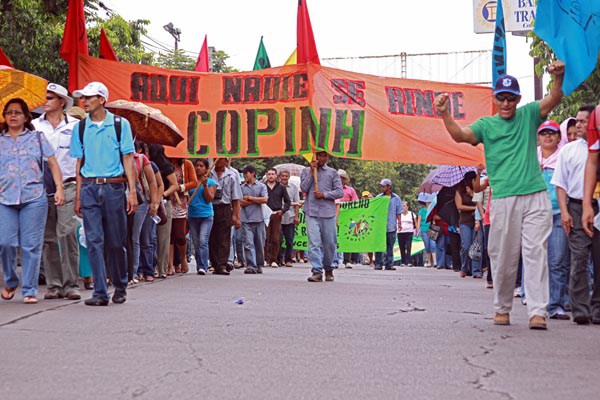
by Deep Green Resistance News Service | Mar 19, 2016 | Repression at Home
Featured image: COPINH march in Honduras, from elmundo.cr
By Cultural Survival
On March 15, 2016, Nelson Garcia, a member of the same Indigenous rights group as Berta Caceres was assassinated in Honduras. Garcia was killed by four gunshots to the face in the Rio Chiquito community, less than two weeks after Caceres’ murder.
Both were outspoken members of the Civic Council of Popular and Indigenous Organizations of Honduras (COPINH). Garcia had been involved in a land dispute to reclaim Indigenous lands in Rio Chiquito along with 150 families who were members of COPINH. On March 15, 100 police officers, 20 military police, and 10 soldiers were sent to evacuate the area.
“They said that they would be peaceful and they were not going to throw anyone out of their houses, but at midday they started to tear down the houses, they destroyed the maize, the banana trees and the yucca plantations,” said Tomas Gomez, a COPINH coordinator. “When they finished the eviction, our companion Nelson Garcia went to eat in his house, they were waiting in the zone that the commission of COPINH to pass, but it was diverted. Garcia arrived first and they killed him,” he added.

Nelson Garcia
It is not clear who was behind the killing. Outraged human rights groups in Honduras have demanded the protection of COPINH members since the assassination of Caceres. Garcia was the father of five children and leader of the community in Rio Chiquito. Human and environment rights activists are regularly targeted in violent attacks in Honduras. At least 116 environmental and human rights defenders were killed in 2014, according to Global Witness, but many suspect that number to be much higher.
COPINH has issued the following statement:
The assassination of our comrade Nelson García and the eviction of the community of Río Chiquito are additional elements of the war against COPINH that seeks to end our more than twenty-two years of work defending, resisting, and constructing.
Today’s aggressions are additional elements of the large quantity of threats, aggressions, assassinations, intimidations and criminalizations directed against COPINH.
Since the assassination of our comrade Berta Cáceres we have been the target of a large number of that show there is zero interest on the part of the Honduran state in guaranteeing our lives and the work that we perform, as well as disregard for the mandates of the IACHR in terms of the application of the precautionary measures that have been granted us. The precautionary measures were granted March 6th, and now, nine days later, they’ve killed one of our comrades.
How could anyone expect us to trust the investigative process of the state that criminally harasses the leadership of the organization by announcing that it is under investigation for presumed participation in the murder, while not investigating the sources of the threats?
How could anyone expect there would be justice in the case of our leader Berta, when the measures necessary to protect her family are not guaranteed, and the daughters and companions of our comrade Berta have been followed by an armed man in the city of Tegucigalpa during their meetings with the authorities?
Since the very day of Berta’s assassination, the installations of COPINH in La Esperanza have been under surveillance by unknown persons, intimidating those who remain in resistance following in the footsteps of our leader.
In the same way the comrades of the community of Río Blanco have suffered aggressions and persecution when they went to the city of Tegucigalpa to make their case in front of entities such as the Ministry of the Interior and the diplomatic representatives of the G16.
Also there was an incident in which the comrades of the community went to the Río Gualcarque and were assaulted with shotgun blasts by the security guards of the hydroelectric project Agua Zarca, fortunately without injuring any members of the community.
All of these aggressions are part of a plan for the extermination of our organization and we call for national and international solidarity to fight back.
We demand an end to the persecution, harassment, and war against COPINH.
We demand that the Honduran state answer for the deaths of our comrades and that there be no more impunity.
We demand justice for our comrade Berta Cáceres.
With the ancestral force of Lempira, Mota, Etempica, Berta, our voices rise full of life, justice, and peace.
Berta’s alive, the struggle thrives!
La Esperanza, Intibucá, Honduras. Done on the 15th day of the month of March, 2016.
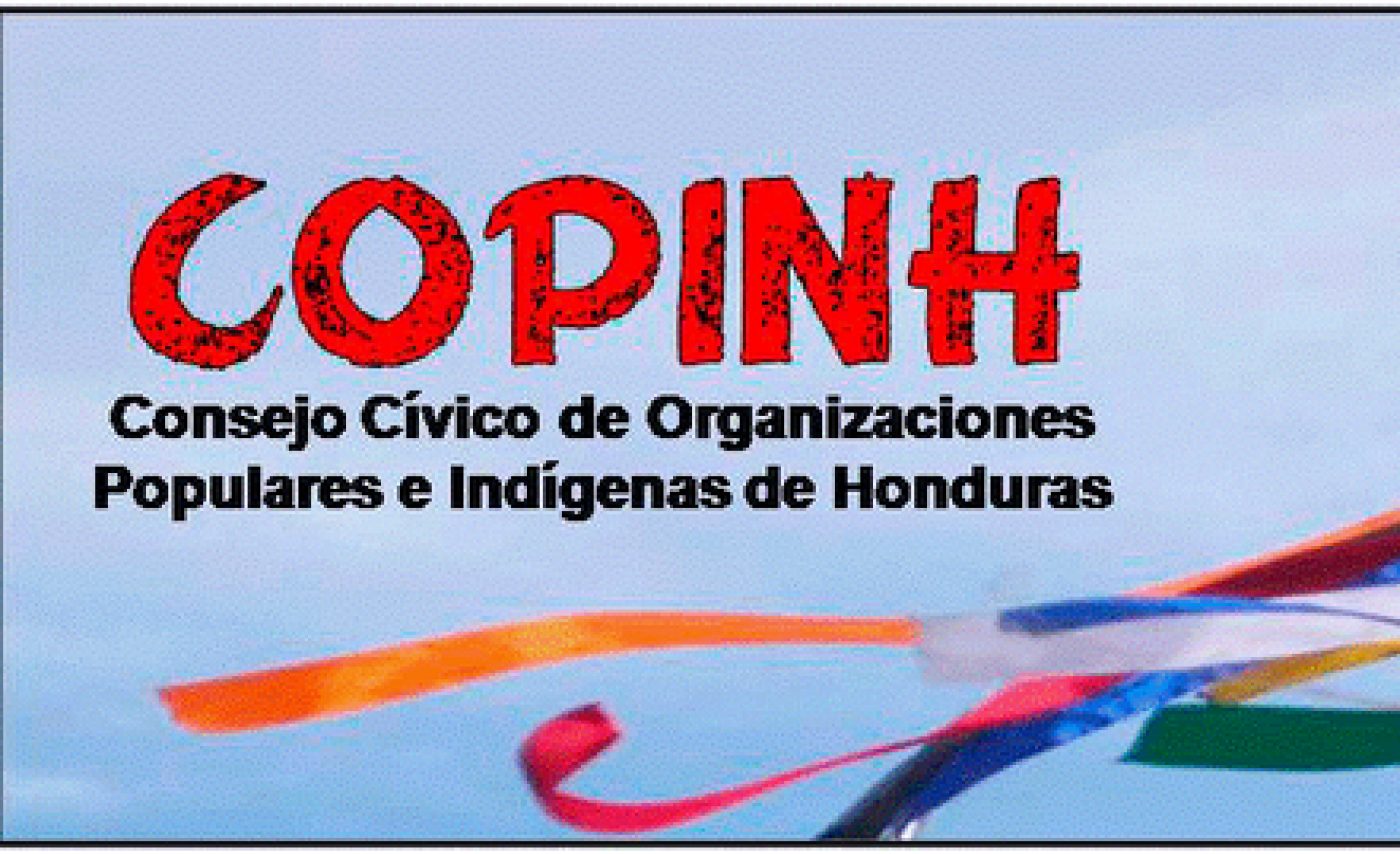
Via Campesina has also reported that violence in Honduras since Berta’s death has skyrocketed: “In the last few weeks the situation has worsened greatly with the proliferation of hired assassins aiming to take the lives of those who demand land to produce food, of those who struggle against extractivism, dams, and agribusiness.”
Other recent violence includes:
· Assassination attempt of Cristian Alegría in front of La Vía Campesina in Tegucigalpa. Cristian is the cousin of Rafael Alegría, Coordinator of La Vía Campesina Honduras and currently a member of the Honduran Congress for the Libre Party.
· Harassment of the president of MUCA (Unified Movement of Aguan Farmers), Juan Ángel Flores, who was arrested in the department of Colón, falsely accused of links to drug trafficking. The lack of evidence forced authorities to release him hours later.
· Detention of public defender Orbelina Flores Hernández, member of the Permanent Human Rights Observatory of the Aguan, accusing her of involvement in land conflicts.
· Sentencing of David Romero, journalist of Radio Globo, to 10 years in prison. David’s investigative reporting had exposed embezzlement of social security and other acts of corruption in Honduras, involving the ruling party, that gave rise to tens of thousands taking to the streets last year.
· Forcing Mexican environmental activist Gustavo Castro Soto — the sole witness to Berta’s assassination and himself injured during the shooting — to stay in Honduras for 30 days despite fears for his safety.
Cultural Survival joins hundreds of organizations in encouraging the international community continue to speak out against this violence.
Take action here
Read more: 6 Things You Can Do to Put Your Anger into Action for #BertaCaceres (March 10)
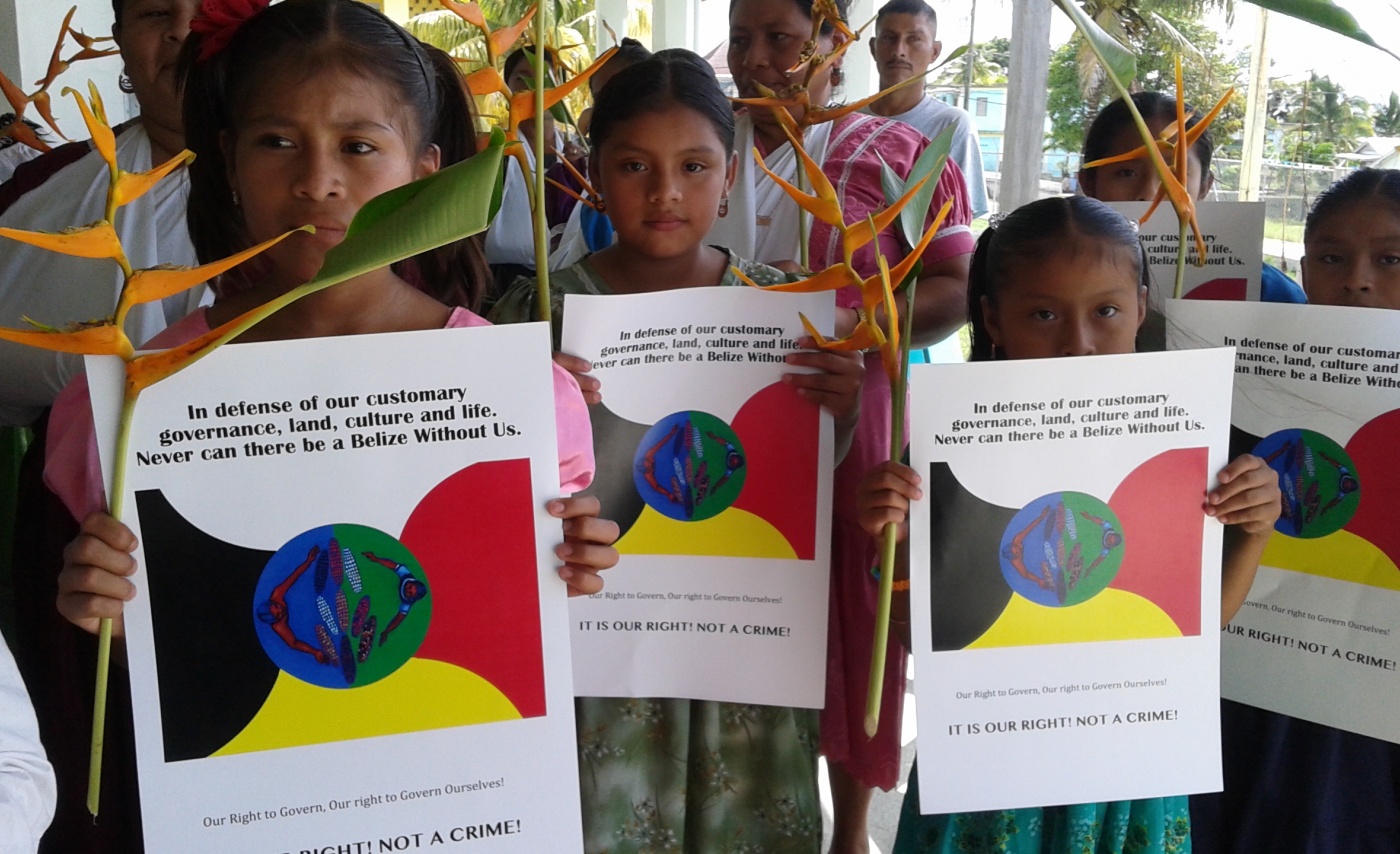
by Deep Green Resistance News Service | Mar 12, 2016 | Indigenous Autonomy
By Cultural Survival
Thirteen Maya villagers will be standing trial in Belize on March 30th, 2016, under fabricated charges. Like many Indigenous leaders fighting to protect their lands, they are being criminalized for these actions, and may face prison time.
On the early morning of June 24th, 2016, traditional leaders of the Maya people of Southern Belize were violently awoken in their homes by police. Charges were brought against 13 people, including 10 farmers, two traditional Maya leaders, and Q’eqchi community spokesperson Cristina Coc, advisor to the traditional leaders and mother of two.
The Maya leaders’ alleged crime relates to the defense of the Uxbenka archaeological site, a sacred site to the Maya people, located within traditional lands titled to the Maya people under national and international laws. The disputed conflict arose after Mr. Rupert Myles, a Belizean citizen, illegally constructing a house on the grounds of the ancient temple against the advise of the community. According to the Maya community members, the Belize authorities failed to respond to their call to stop Mr. Myles from doing further harm to the site. The community explained that Mr. Myles was invited to a community meeting to resolve the conflict where he became unruly and village police detained him. However, Myles later accused the Mayas of physically assaulting him at the community meeting, a claim the Maya leaders strongly deny.
Since 2007, Santa Cruz have legal customary ownership of customary lands, where Uxbenka is located, as result of a decision from the Supreme Court that the government of Belize never contested. To date, the government has not taken an steps to protect the property rights of the Santa Cruz Mayas in accordance with their customary land tenure system.
Recently, the Caribbean Court of Justice handed down a judgement ordering the government of Belize to demarcate and register Maya village lands, and to protect them against incursions by outsiders. ‘’The Santa Cruz conflict and subsequent arrests is a direct assault to the spirit of the court order, and shows bad faith engagement by the government,’’ explained Program Coordinator for the Maya Leaders Alliance, Pablo Mis.
The laws of Belize prohibit building on or damaging any archeological site. In May 2015, a letter was sent to the Belize Institute of Archaeology (NICH) from the Director of the Uxebnka Archaeological Project, in which he expressed his concern that Mr. Myles had: “bulldozed into the archaeological platform (…). He has also built new buildings, and has burned vegetation to the very edge of the steel plaza, further endangering the ruin. The bulldozing activity has irreparably damaged the platform.” However despite this, since the charges were brought, Belizean authorities have continued to allow Myles to maintain construction and ongoing desecration of the archeological site held sacred to the Maya.
The Maya leaders stand by their actions. Indigenous People’s right to defend their sacred sites is backed by the UN Declaration on the Rights of Indigenous Peoples. Article 11.1 states that Indigenous Peoples have the right to protect past manifestations of their cultures, such as archaeological and historical sites. Article 11.2 requires States to provide redress with respect to their cultural property taken without their Free, Prior and Informed consent or in violation of their laws traditions, or customs. “The Maya villagers will continue to defend these cultural heritage sites that are important to all Belizeans,” explained the Maya Leaders Alliance in a press release.
The situation is being closely monitored by international human rights bodies, including the UN Special Rapporteur on the rights of Indigenous Peoples, Ms. Vicky Tauli-Corpuz. “I am concerned by the inaction of the Government of Belize to assist Maya villagers to protect their property rights in the face of threats to those rights,” she expressed in a press release, explaining, “It appears as though the repeated requests to local police by Santa Cruz village leaders for assistance in removing the individual from the archaeological site within their village lands, went ignored.”
Listen to an interview with the Special Rapporteur:
Friends of Santa Cruz 13 are urgently seeking funds to cover legal counsel to defend their 13 community members on March 30th. See their call for donations here.








